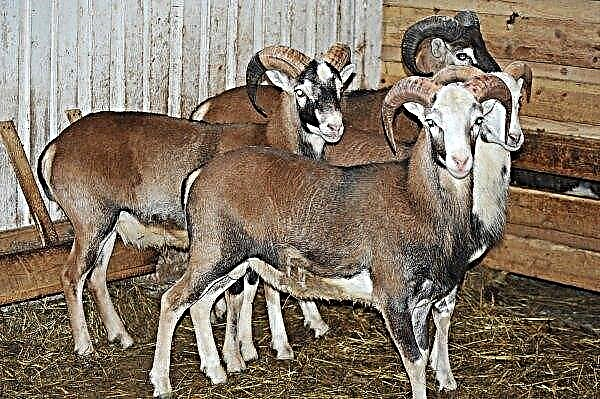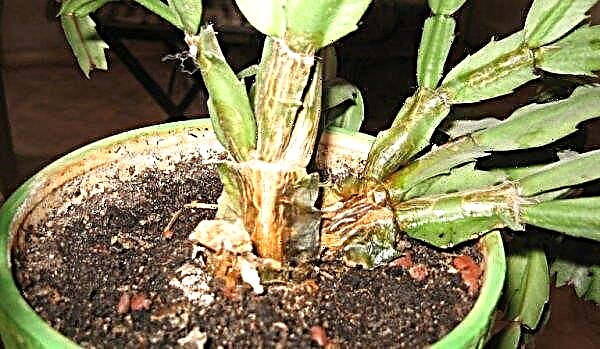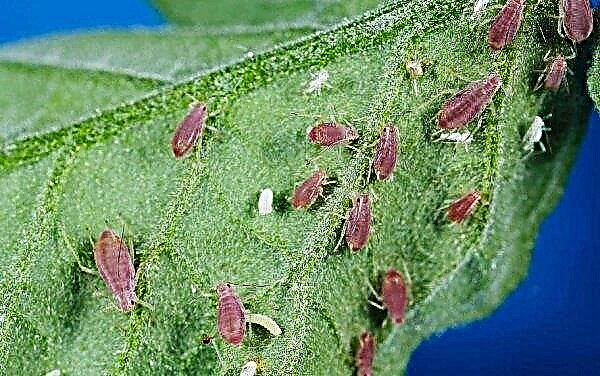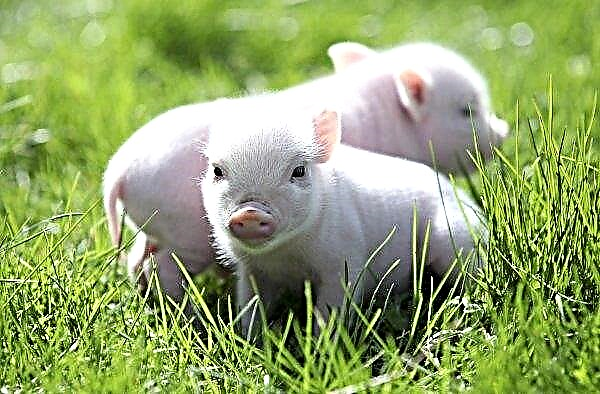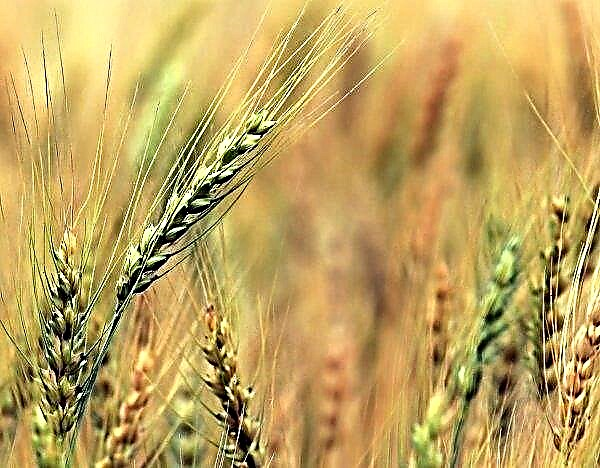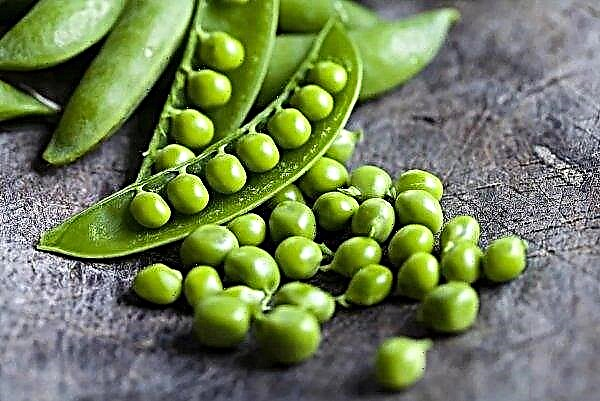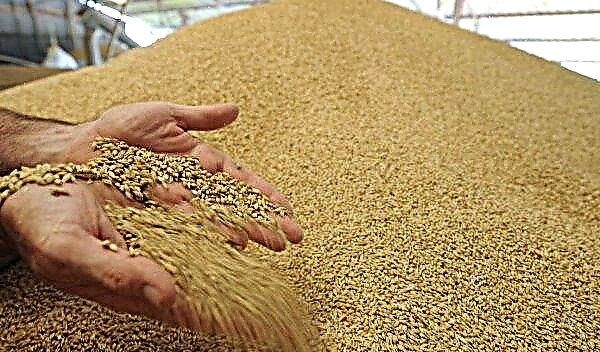When choosing a breed of chickens, most poultry farmers have to choose between abundant egg production and delicious meat. Thanks to the painstaking work of breeders, now you do not have to choose. The Adler silver breed is famous for the taste of meat and regular egg laying. We will tell about the features of its content further.
A bit of history
The breed was bred in 1995 by poultry breeders in Adler. The goal of the scientists was to get a large breed of chicken, with plentiful egg laying and tasty meat.
Therefore, the selection was multi-stage, during which for several years breeds with leading qualities were crossed. It took 10 years to create a new breed!
Did you know? The yolk in a raw chicken egg is always at an equal distance from the shell on all sides.
Description and distinctive features of the breed
Adler silver chickens are particularly resistant: they tolerate temperature changes and change of diet without problems. Chick survival is higher than other breeds. Adler chicken also boasts excellent immunity to common diseases.
Appearance
A distinctive feature of the breed is a compact physique, excellent meat shape.
| Head | Rounded, small in size with a leaf-shaped crest of red color. |
| Beak | Curved, short, yellow. |
| Neck | Direct, has a strong skeleton. |
| Chest | Well developed. |
| Stomach | The abdominal muscles are well developed. |
| Wings | Long, wide - large. |
| Tail | Middle length. |
| Paws | Of medium length, tibia clearly distinct, metatarsus well developed. |
| Plumage | Rare, tight fitting. |
| Color | White with silver tint. |
Important! Chicken with an excessively long neck and tail should be discarded.
Character
The breed is famous for its calm temperament and friendliness. Experts note that the flexible nature of the bird simplifies the work of the poultry farm.
Advantages and disadvantages
- The main advantages of the breed are:
- friendly character;
- high productivity indicators;
- endurance;
- durability;
- unpretentiousness.

- The disadvantages include:
- lack of instinct of incubation (to obtain offspring it is necessary to use an incubator);
- when transporting adults to a new place, they can become aggressive during the adaptation period.
Content Rules
Hens of this breed are whimsical and require special care, especially in the first year of life. This is due to the early puberty of individuals. To preserve the health of the livestock, it is necessary to deliberately restrain their development so that maturity falls by 5–9 months of life.
Did you know? Chickens lay eggs only in the light. Even if the time to rush came up — the laying layer will wait until dawn or turn on artificial lighting.
House conditions and facilities
The chicken coop for Adler silver breed must meet the following requirements:
- Size - 1 sq. m. for 2 individuals.
- Flooring - straw, sawdust, fine gravel, moss and peat.
- Temperature - not lower than + 15 ° С
- Perches - are located at the far wall at an angle, with the calculation of 25 cm per individual.
- Nest - 1 box for 4-5 hens.
- Lighting - for adults, the light should be maintained at 15 lux.

Care
Care is an important component of the correct keeping of chickens. To keep your stock healthy, you must:
- Disinfect the room. Treat the house every two months with the help of special preparations, clearly following the instructions on their packaging.
- Clean in the chicken coop and regularly change the litter. Chicken droppings are an excellent medium for the propagation of pathogenic bacteria, therefore it is recommended to replace litter with new ones once a week.
- Arrange ash baths. Place several containers of sand and ash in the chicken coop. In them, layers can independently clean their feathers from dirt and parasites.
Important! It is recommended to remove chickens from the chicken coop during the harvesting period.
Walking patio
For the full development of laying hens and preventing obesity, it is necessary to equip a patio for walking. For these purposes, a garden with green grass is suitable. The breed is quite volatile, so it is recommended to make a fence two meters high from wire and kapron.
Feeding troughs and drinking bowls
Chicken feeders are of three types, each has its own purpose:
- wooden is used for feeding dry feed, animal feed;
- metal - for wet mash;
- mesh feeders - for feeding grass.

Metal drinkers are used - they should always be filled with clean water and be in the chicken coop. There should be several feeders, at the rate of 3-4 individuals per feeder, otherwise the stronger ones will take food from the weak.
Moult and egg laying break
Seasonal molting is a natural process associated with the response of hens to changing climatic conditions.
Depending on the climate, several types of seasonal molting are distinguished:
- Spring falls in March — April. At this time, the layers drop winter, hot plumage in order to feel more comfortable with the onset of warmth.
- Summer Occurs in July, duration - 4 weeks. During this period, it is important to monitor the rate of molting, if the process of changing the pen took place in less than three weeks - pay attention to the health of the livestock.
- Autumn is the most noticeable molt; it falls in September and the end of August. Duration 50–65 days. At this time, the plumage is replaced by a warmer winter.
A break in egg production is a deviation that can talk about:
- unbalanced diet;
- obesity;
- stress
- short daylight hours;
- diseases.

Adult chicken diet
The daily diet should contain:
- Cereal. Adler silver has excellent digestion and is able to digest even corn kernels.
- Greenery. Greens need chickens, especially in the summer. Vitamin deficiency and lack of fiber will adversely affect overall health.
- Protein. Protein-rich foods contribute to a significant increase in egg size.
- Vegetables and root crops. Chickens with a special appetite eat pumpkin, potatoes, beets, cucumbers, zucchini.
- Mineral supplements. For these purposes, bone meal, chalk, grated shells are perfect.
Did you know? The nutrition of chickens should include as many beneficial substances as possible, but at the same time balanced.
Breeding young
Due to the fact that the breeding instinct is absent or rare in this breed, an incubator is used to breed the chicks.
Egg incubation
Recommended to find out

- Do not take eggs from very young and old laying hens, as well as from sick birds.
- You can take eggs from the incubation nest no later than 5 days.
- Select eggs of the same size and weight.
- It is forbidden to store eggs for incubation in the refrigerator.
- Eggs with shell defects must not be laid.
- It is forbidden to wash and rub eggs before laying.
The eggs in the incubator are kept strictly in accordance with the rules:
| Day | Temperature | Humidity | Turn | Ventilation |
| 1-11 | + 37.9 ° C | 66 % | 4 | |
| 12-17 | + 37.3 ° C | 53% | 4 | 5 minutes twice a day |
| 18-19 | + 37.3 ° C | 47% | 4 | 5 minutes twice a day |
| 20-22 | + 37.0 ° C | 66% | 5 minutes twice a day |
The phased process of development of the chicken germ is shown in the photo below:
As a rule, chickens hatch for 20-22 days.
Chick Care and Feeding
Immediately after hatching, the chickens are transferred to special brooders for subsequent care and proper development of the bird. To allow the chickens to dry and warm, equip their new home with a heating pad with warm water.
Important! Normal weight for daily chick - 40 grams, by this time he should eat and move independently. If the chick does not meet these criteria, isolate it and pay special attention to it.
On the first day, the temperature inside the brooder should be maintained at + 30-35 ° C. Every day the temperature must be reduced, on the fifth day, the indicators should be at +29 ° C. By the age of one month, the temperature should be reduced to +20 ° C.

Also, for the chicks, it is necessary to lengthen the daylight hours. Install special lamps, which should work from 6.00 to 21.00.
In the early days of chicks, it is important to pay special attention to their nutrition. During the first 10 days they need to be fed every two hours. Food should be prepared before feeding - food that the birds did not eat in 30 minutes should be thrown out.
On the first day, young animals are fed a mixture of boiled eggs and semolina; on the second day, greens and starter feed are added. On the third day, cottage cheese or other dairy products are introduced. Starting from the fourth day, protein feed, cereals are introduced. Fifth day - boiled vegetables are added.
A week after birth, mineral substances (peeled and chopped egg shells) are poured into a separate feeder.

By two weeks of life, fishmeal is gradually introduced, excluding eggs. Porridge is replaced by stirrers, boiled potatoes are added. By the month of young growth is transferred to adult nutrition.
Vaccination of young animals
To plant young chicks is necessary, so you can protect them from diseases.
It will be useful for you to find out

- Infectious bronchitis.
- Bursitis is an inflammation of the mucous bags of the joints.
- Salmonellosis
- Rhinotracheitis.
- Coccidiosis
- Diseases of Marek and Newcastle.
Subsequent vaccinations are carried out strictly according to the schedule:
- first week - vaccination against coccidosis;
- 20th day - vaccine against bursitis, eight days later, re-vaccination is necessary;
- 2.5 months - vaccination of livestock from Newcastle disease and infectious bronchitis;
- 6 week - vaccination against salmonella;
- 8 - 11 week - prevention of rhinotracheitis;
- 10 week - revaccination against Newcastle disease;
- 13 week - vaccination against encephalomyelitis;
- 15 week - vaccine against mycoplasmosis and salmonella revaccination.
Important! Immediately after hatching, they are vaccinated against Marek’s disease, the same day or the next - vaccination against salmonella.
To grow a healthy livestock, you must clearly follow the recommendations specified in the article. Neglecting at least one item can cost hens health.
Experienced poultry farmers say that it is better for beginners to buy adult chickens, because it is quite difficult to grow young animals.


